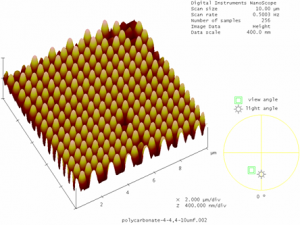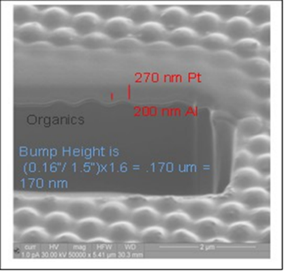
Three faculty members in Iowa State University’s Department of Electrical and Computer Engineering (ECpE) have been awarded a grant from the United States Department of Energy (DOE)’s Office of Energy Efficiency and Renewable Energy (EERE). The award of $1.3 million comes from the program “Solid-State Lighting Advanced Technology R&D-2016.”
Ruth Shinar, senior scientist at the Microelectronics Research Center (MRC) and adjunct professor of ECpE, is the principal investigator for the project. Co-principal investigators are Joe Shinar, professor of physics and astronomy (P&A) and courtesy professor of ECpE, and Rana Biswas, senior scientist at the MRC and adjunct professor of P&A and ECpE. The title of their winning project is “Enhanced Light Extraction from Low Cost White OLEDs Fabricated on Novel Patterned Substrates.”
The DOE aims to increase organic light emitting diodes (OLED) extraction to 70-percent by the year 2020, and this project will work toward meeting that objective by producing simple, inexpensive phosphorescent white OLEDs (WOLEDs) with significantly enhanced light extraction. The grant money will go toward fabricating these WOLEDs on a patterned flexible substrate, while maintaining a high color rendering index and maximizing the stability of the WOLEDs. This will enable extraction of the approximately 50-percent light trapped by total internal reflection at the high-index organic/electrode and plasmon-related losses at the metal electrode.

“The DOE funding is necessary to achieve the objectives,” R. Shinar said, “as our preliminary results, though indicating that our approach is very promising, point to challenges that will be mitigated in the proposed project via simulations, fabrication of new patterned substrates with optimized designs and fabrication of optimized phosphorescent WOLEDs, including with improved electrodes.”
The success of the project will help create a clean, energy-efficient solid-state lighting (SSL) future and will benefit U.S. manufacturing. Because the materials and device designs will be simple and low cost, the project will help make OLED-based SSL more competitive, and the university-industry collaboration will advance SSL-related business, leading to national job creation. MicroContinuum, Inc., of Cambridge, Mass., a sub-recipient of the grant, will fabricate the substrates by a roll-to-roll process based on design and feedback provided by ISU. Trovato Manufacturing LLC, from Victor, N.Y., will assist in developing the product with the university and MicroContinuum, Inc.

“We are very excited about the project,” R. Shinar said. “It will be very helpful in addressing one of the main issues facing OLED SSL applications. It will also involve graduate students, who will be trained in the area or organic electronics and will then assist in solving energy-related problems, and will help to develop U.S. manufacturing, as well.”